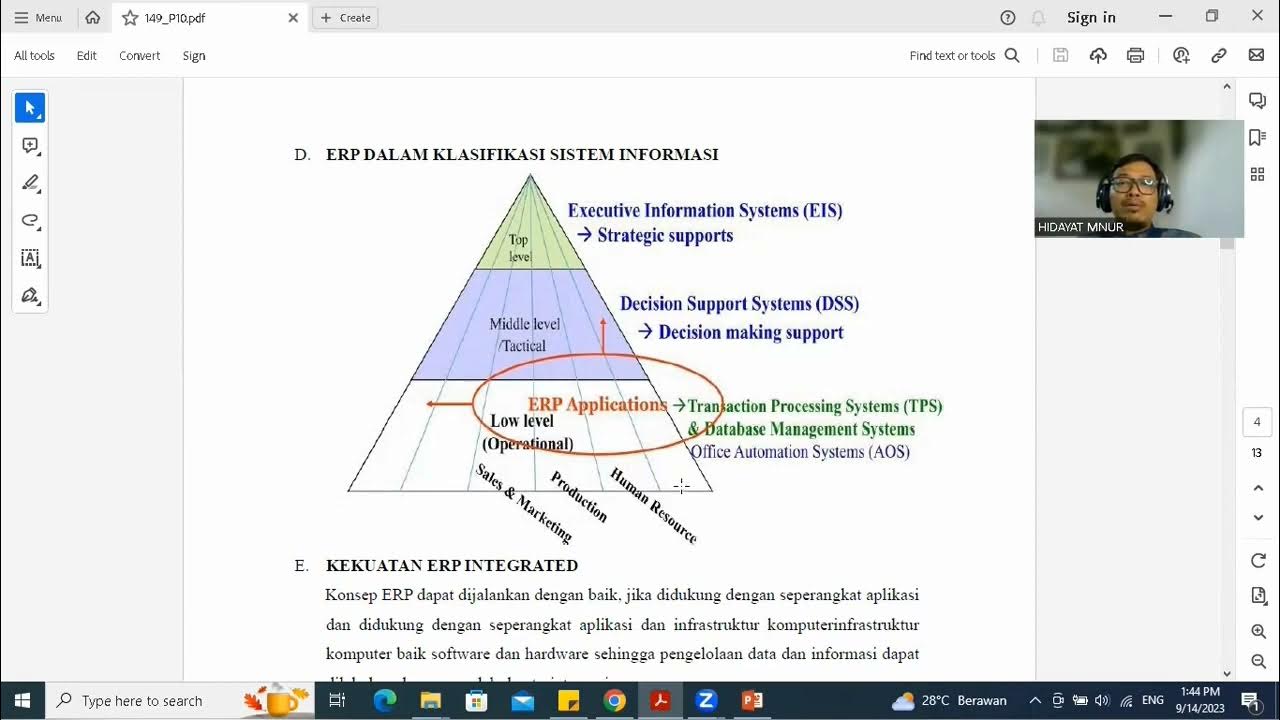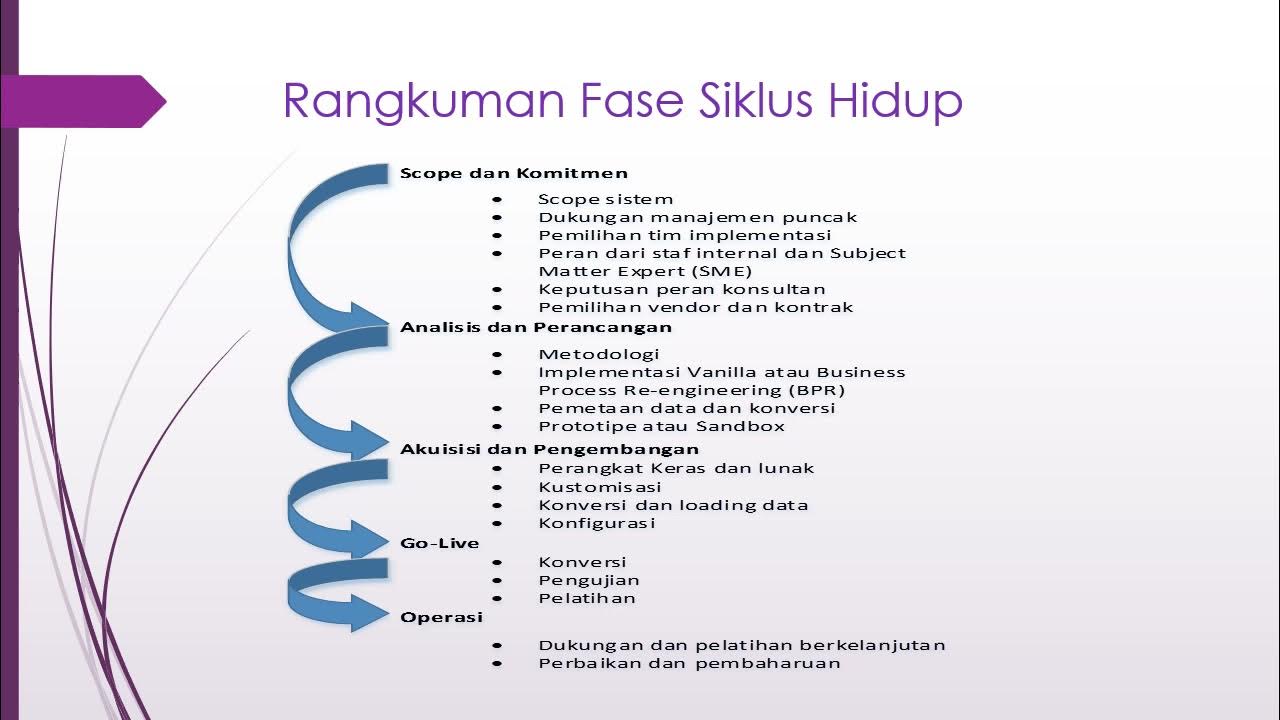Hershey's ERP Implementation Failure | Supply Chain Issues | MBA Case study analysis with Solutions
Summary
TLDRThe Hershey's case study illustrates the perils of inadequate ERP implementation. In 1999, Hershey's rushed to deploy an ERP system in 30 months instead of the recommended 48, coinciding with peak demand periods like Halloween and Christmas. This oversight led to significant order fulfillment issues, causing a loss of $150 million in sales and damaging retailer relationships. The company's failure to conduct thorough system testing and to manage the project within a realistic timeframe highlighted the importance of meticulous planning and testing in ERP implementations.
Takeaways
- 🍫 Hershey's, a leading confectionary company, faced significant challenges due to inadequate IT systems.
- 📈 The company had a market capitalization of five billion dollars but lacked innovation in its IT systems.
- 🛠️ Hershey's attempted to implement an ERP system in 30 months instead of the recommended 48 months, leading to complications.
- 🎃 The ERP implementation coincided with Hershey's busiest season, exacerbating the issues during Halloween.
- 📉 Hershey's lost sales to competitors like Mars and Nestle due to their inability to meet delivery deadlines.
- 🚫 The company's failure to fulfill orders resulted in a loss of 100 million dollars in potential sales.
- 🔍 The implementation team compromised on critical systems testing phases to meet the aggressive schedule.
- 📊 Hershey's faced a 15-day delay in fulfilling orders, which had significant impacts on their distributors and market credibility.
- 📈 Inventory piled up as the manufacturing process continued smoothly, despite the inability to ship products.
- 💡 The case highlights the importance of proper testing and realistic scenario planning in ERP implementation.
- 🗓️ Timing was a critical issue; Hershey's tried to rush the ERP implementation and failed to account for peak demand and employee training.
Q & A
What was the key issue that Hershey's faced with its ERP implementation?
-Hershey's key issue was trying to implement an ERP system in an unreasonably short time frame of 30 months instead of the recommended 48 months, which led to failures in order fulfillment and delayed shipments during peak seasons like Halloween and Christmas.
Why did Hershey's decide to roll out the ERP system more quickly than recommended?
-Hershey's wanted to roll out the ERP system before Y2K, which pressured the company to shorten the implementation timeline to 30 months.
How did the ERP system failure impact Hershey’s sales and profitability?
-The ERP failure caused Hershey's to miss $100 million worth of orders, resulting in a 19% drop in profits and a 12% decline in sales during the third quarter of 1999.
What was the primary cause of Hershey’s failure during the ERP implementation?
-The primary cause was sacrificing critical systems testing for expediency, which led to data processing and systems integration issues that went undetected until after the system was live.
What mistakes did Hershey's management make during the ERP implementation?
-Hershey's management made several mistakes: they rushed the timeline, implemented the system during peak seasons, failed to conduct thorough systems testing, and did not adequately train their employees on the new system.
Why is systems testing considered critical in an ERP implementation?
-Systems testing is critical because it acts as a safety net to identify potential issues with data processes, systems integration, and overall functionality, allowing companies to address problems before going live.
How did the lack of training contribute to Hershey’s ERP failure?
-Employees were not fully trained on the new ERP system, making it difficult for them to adapt to updated processes during a critical business period, which contributed to the company’s inability to meet demand.
What role did peak season timing play in the failure of Hershey's ERP system?
-Hershey implemented the ERP system during its busiest periods, Halloween and Christmas, leaving no room to correct issues as they arose, which resulted in unfulfilled orders and lost sales.
What long-term effects did Hershey’s ERP failure have on the company?
-In the short term, Hershey lost significant sales and market share. The failure also affected long-term sales as the company lost valuable shelf space to competitors like Mars and Nestlé.
What were the two key lessons that companies can learn from Hershey’s ERP failure?
-The two key lessons are: 1) Test business processes and systems using realistic scenarios, and 2) Pay careful attention to the ERP schedule to avoid implementation during critical business periods.
Outlines

هذا القسم متوفر فقط للمشتركين. يرجى الترقية للوصول إلى هذه الميزة.
قم بالترقية الآنMindmap

هذا القسم متوفر فقط للمشتركين. يرجى الترقية للوصول إلى هذه الميزة.
قم بالترقية الآنKeywords

هذا القسم متوفر فقط للمشتركين. يرجى الترقية للوصول إلى هذه الميزة.
قم بالترقية الآنHighlights

هذا القسم متوفر فقط للمشتركين. يرجى الترقية للوصول إلى هذه الميزة.
قم بالترقية الآنTranscripts

هذا القسم متوفر فقط للمشتركين. يرجى الترقية للوصول إلى هذه الميزة.
قم بالترقية الآنتصفح المزيد من مقاطع الفيديو ذات الصلة

Why did Patanjali fail in India? : Business case study

Video Pembelajaran E Business Pertemuan 10

Video SE 5_2 Siklus Hidup Pengembangan ERP

Strategies for ERP Implementation and Organizational Change Management

Hybrid Cloud Explained

SIKDA Lombok Timur: Sukses Digital di Tengah Bencana dan Keterbatasan SDM. #SIKDA #sisteminformasi
5.0 / 5 (0 votes)
